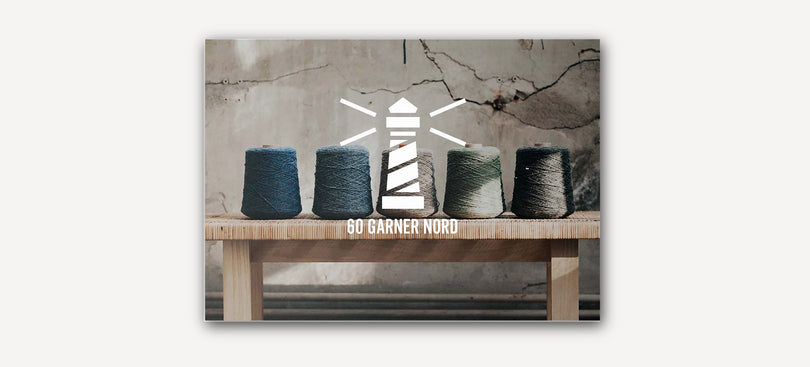BLOGGARTIKLAR - 60 GARNER NORD
Nybörjare
Vad är varv i stickning och hur räknar man varven?
Ett varv i stickning är att du stickar alla maskor från början till slut, både om du stickar fram och tillbaka eller runt på rundsticka.
Stickar du fram och tillbaka är det enkelt att veta när varvet är färdigt men stickar du runt på rundsticka är det lättare att hålla reda på varvets början om du sätter en markör mellan första och sista maskan.
För att visa och prata lite om varv i stickning tänker jag att vi utgår från en slätstickad provlapp som är stickad fram och tillbaka.

En slätstickad maska ser från rätsidan (framsidan) ut som ett V.
Om vi ser på bilden av provlappen så har jag gjort markeringar både åt sidan och uppåt.
De V som är markerade uppåt är antalet varv och de V som är markerade åt sidan är antalet maskor.
Detta är en viktig och grundläggande del i stickning - att kunna räkna varv och maskor för att fastställa stickfastheten. I alla mönster står det angivet vilken stickfasthet man skall ha för att få rätt storlek på plagget.
Stickfastheten brukar oftast anges i antal maskor och antal varv per 10 cm.
Vi kan som exempel titta på nedanstående mönster:
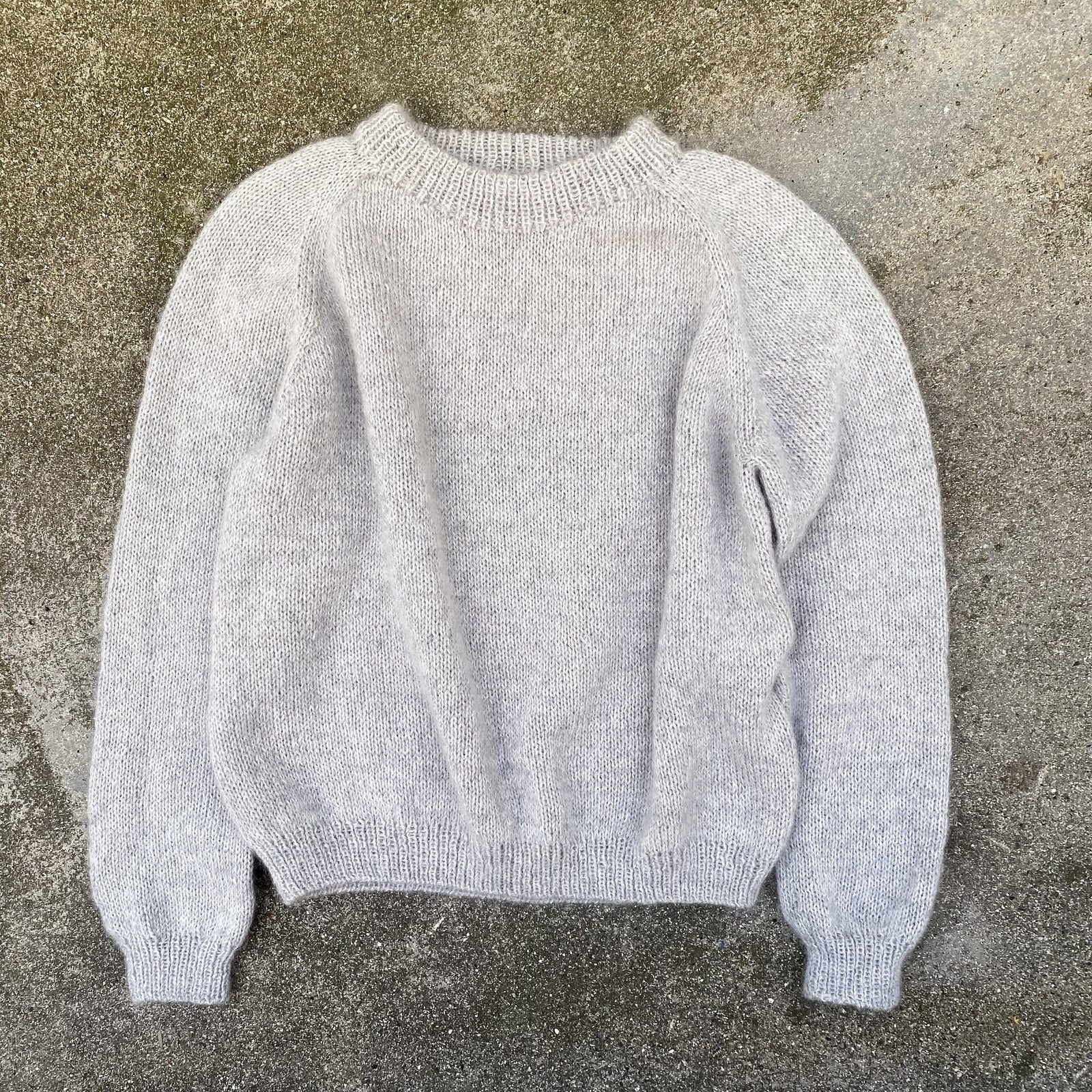
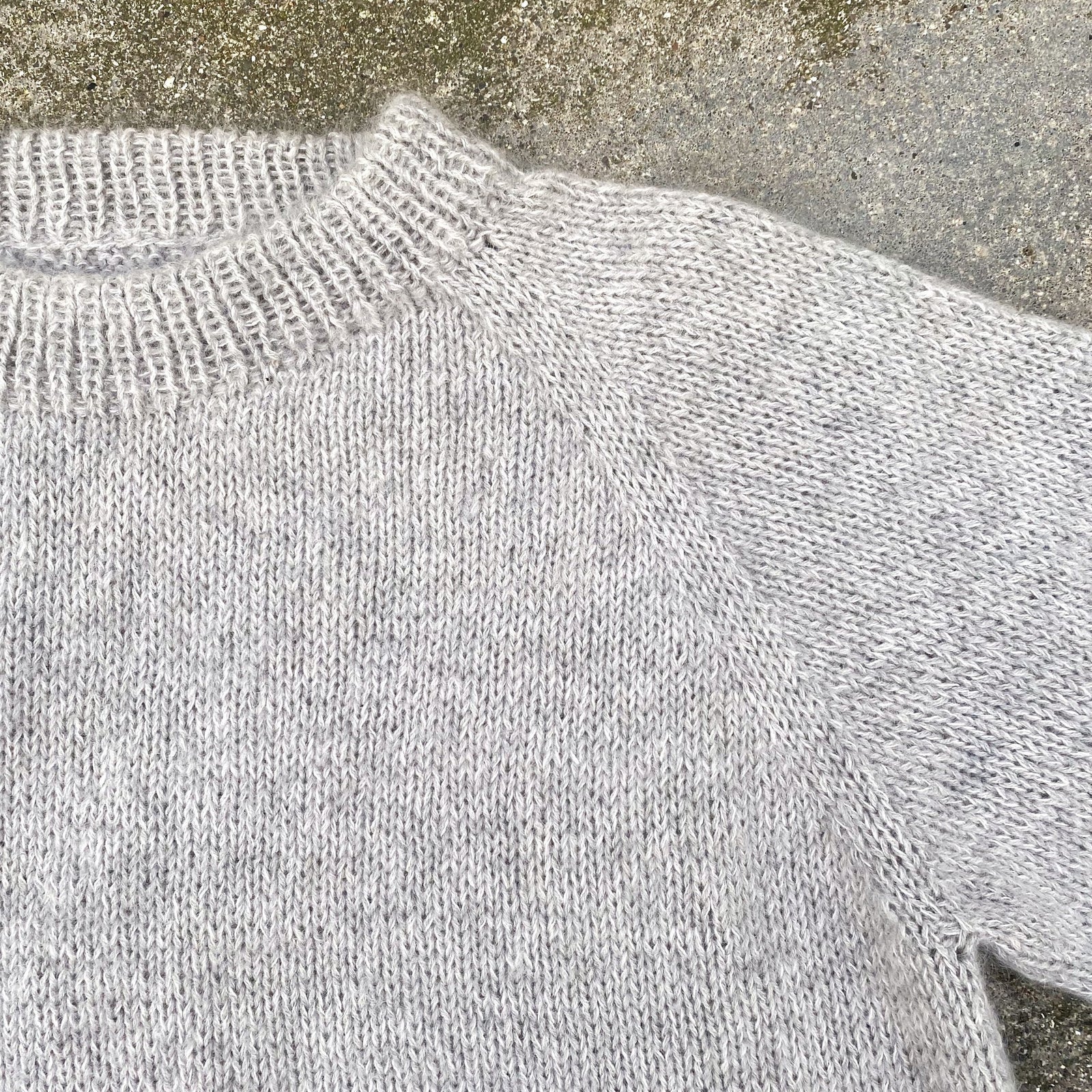
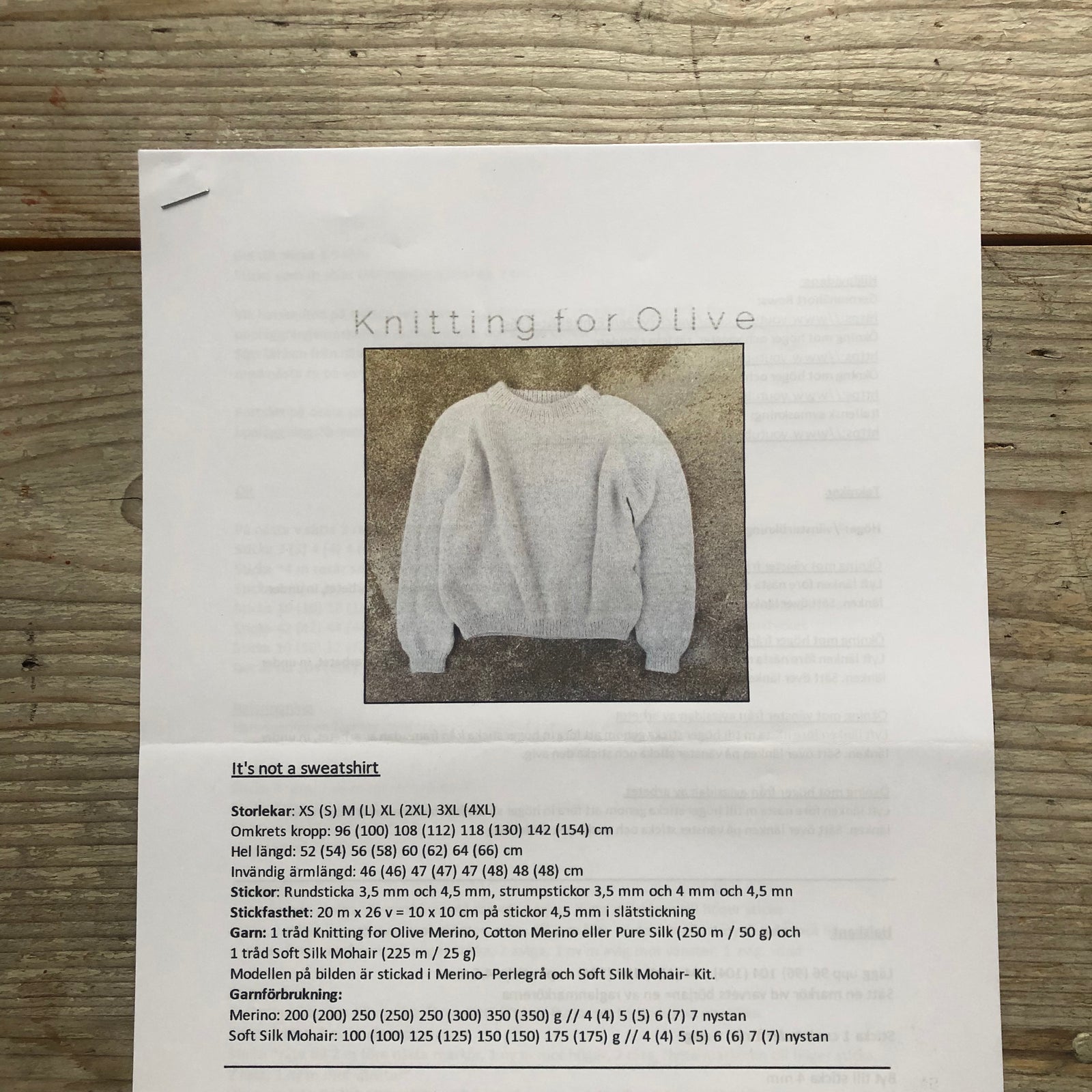
Här anges stickfasthet 20 maskor x 26 varv på stickor 4,5 mm i slätstickning. Då mäter vi alltså på provlappen ut en ruta 10x10cm. Det finns ett fantastiskt hjälpmedel till detta som man lägger ovanpå provlappen, en stickfasthetsmätare. Har du inte en sådan kan du mäta med måttband eller linjal.
Innan vi mäter bör vi tvätta provlappen i ljummet vatten som vi kramar ur ordentligt och sedan lägger den att torka plant. Våtspänna eller blocka, som vi också säger. Detta för att provlappen skall bete sig på samma sätt som det färdiga plagget när vi tvättat och plantorkat det.


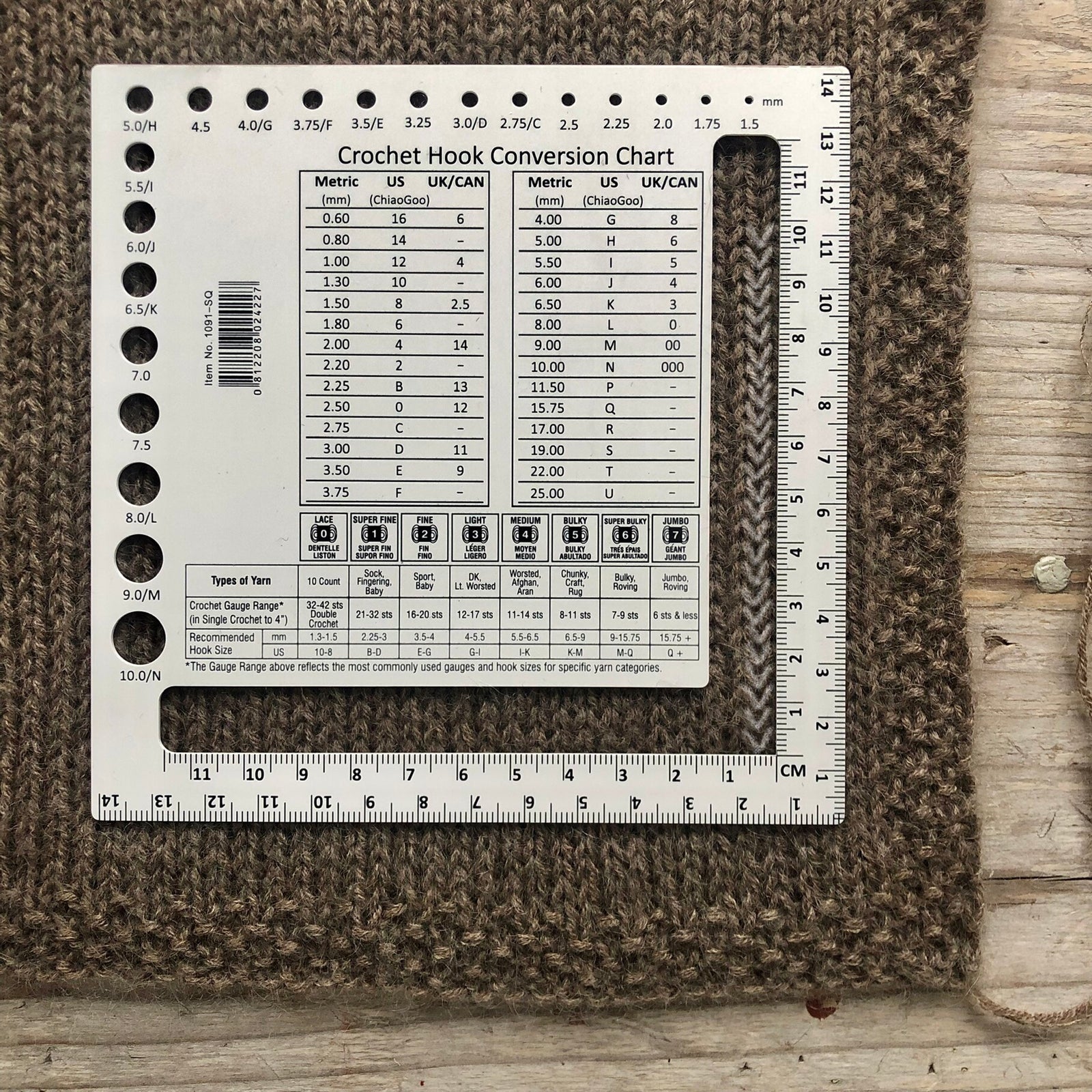
Så.. Nu när den torkat är vi redo att mäta vår provlapp, alltså räkna hur många maskor och varv det går på 10cm.
Stämmer det är det bara att lägga upp och börja sticka, men om det inte stämmer får du sticka ny provlapp med antingen tjockare eller tunnare stickor tills du får rätt stickfasthet.
TIPS: Fota med telefonen och använd ritverktyget att markera maskorna, som jag gjort ovan och även i första bilden.
Om det inte stämmer och du t.ex har för många maskor och varv behöver du använda en tjockare sticka och har du för få maskor och varv tar du en tunnare sticka.
Det kan skilja en del med att bara ändra ett halvt nummer på sticka. På den vita provlappen här har jag börjat nertill att sticka med stickor 4,5 mm för att efter ungefär halva byta till stickor 4 mm.

Masktätheten här har jag mätt med en finurlig manick - Maskemåler. En genomskinlig linjal med masktäthet tryckt på i form av slätstickade maskor, så man lägger den bara på stickningen och ser masktätheten när det stämmer med de tryckta maskorna. Maskorna är markerade både i svart och vitt så att du oberoende av färg på stickningen skall få tillräcklig kontrast så att du ser mätaren ovanpå maskorna.
Den vita provlappen har nertill en masktäthet på 20 maskor och upptill en täthet på 22 maskor.
Se på bilderna hur enkelt den fungerar.
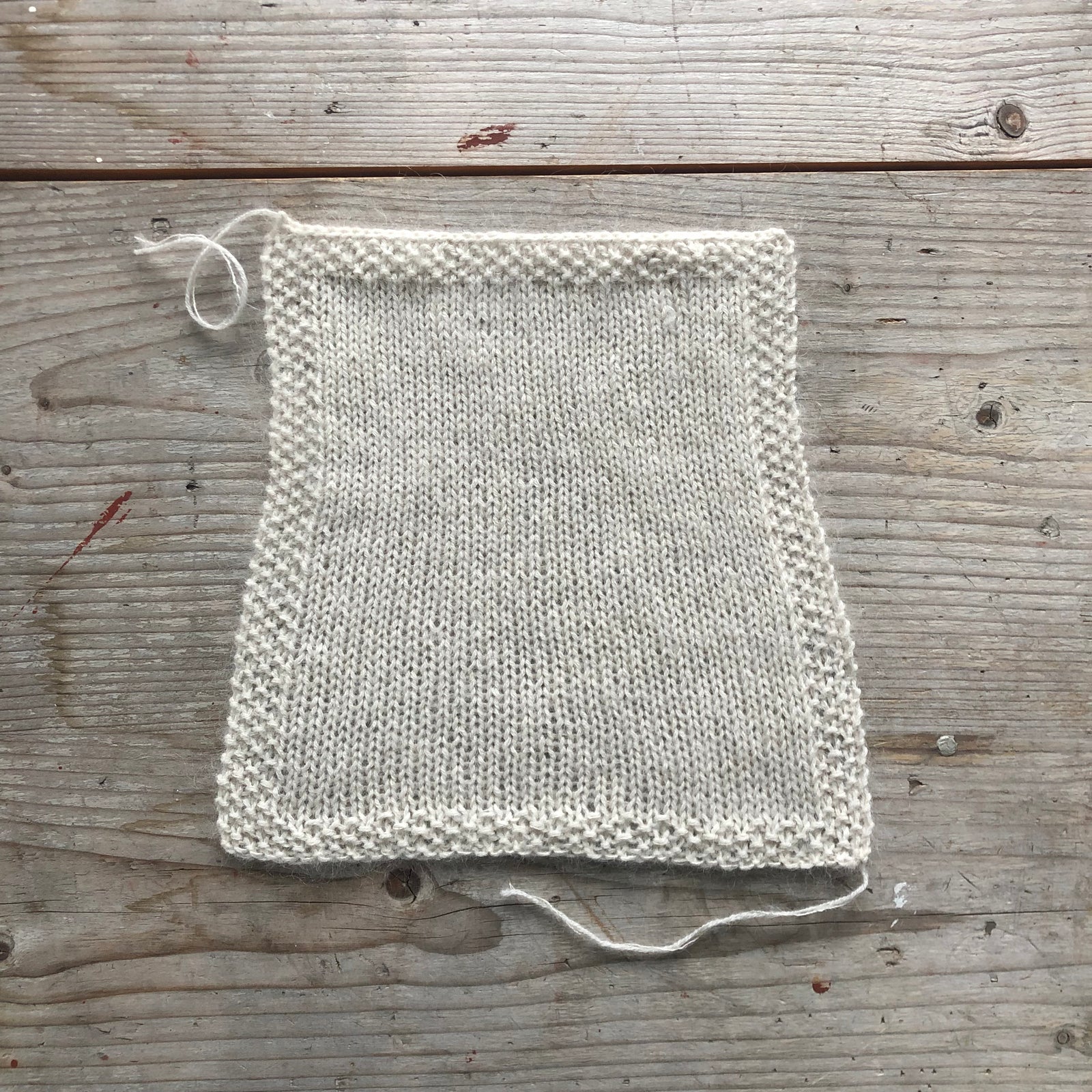

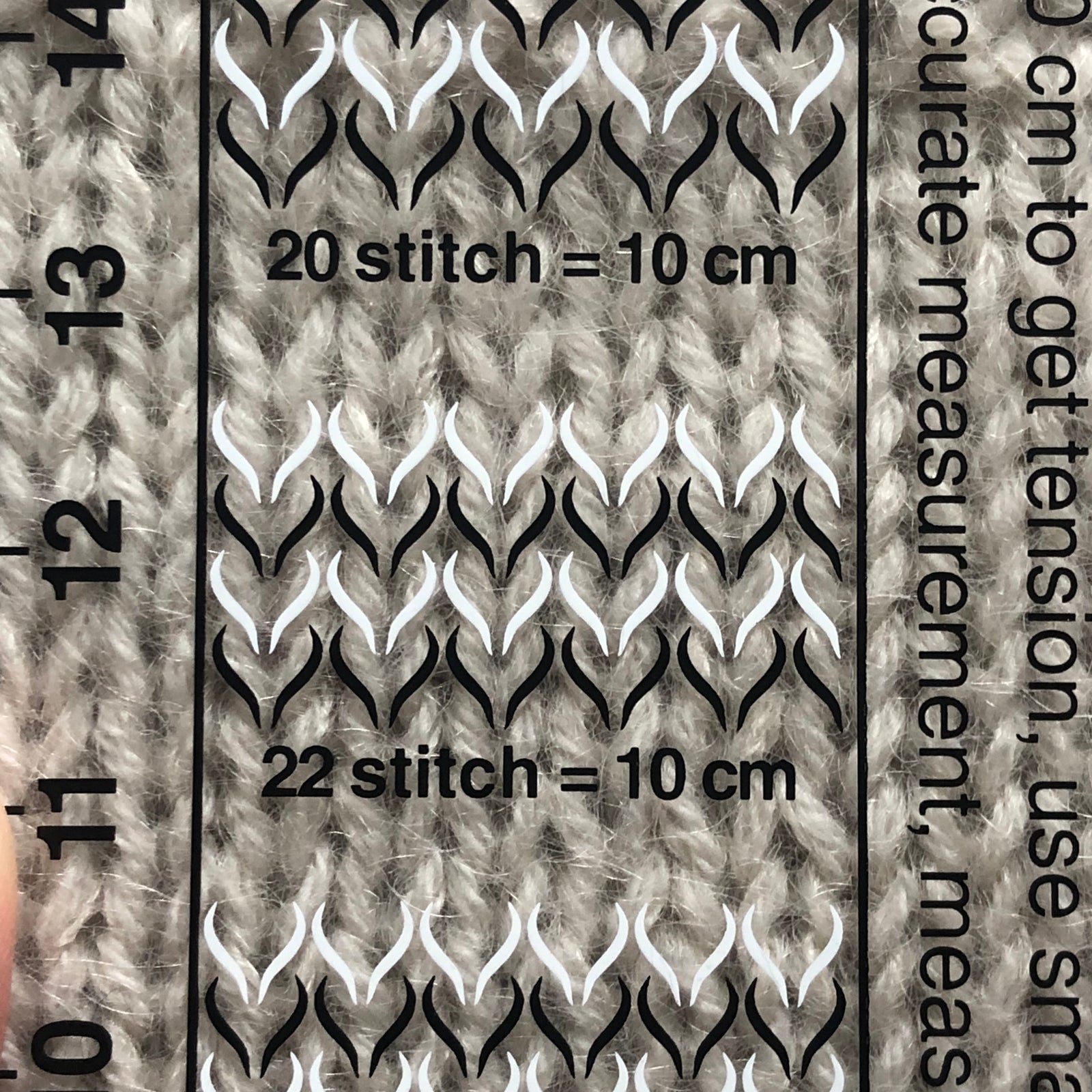
Den har endast jämna antal maskor från 12 - 32, så skall du ha en masktäthet på t.ex 21 maskor får du göra en uppskattning mellan 20 och 22.
Maskemålern mäter inte heller varven genom sina tryckta maskor så det är en linjal på sidan av den. Därför har jag övergått till att säga masktäthet istället för stickfasthet, där vi även räknar varven.
Att mäta stickfastheten, alltså både maskor och varv är att rekommendera särskilt om du skall sticka ett större projekt, som exempelvis en tröja.
Det är ju inte så kul när det inte stämmer… fråga mig…
Jag har lärt mig detta den hårda vägen genom att sticka en tröja UTAN att göra provlapp, den blev ett tält och är nu repad och än så länge inte stickad igen.
Så numera stickar jag alltid provlapp inför större projekt.
Kram / Pernilla

